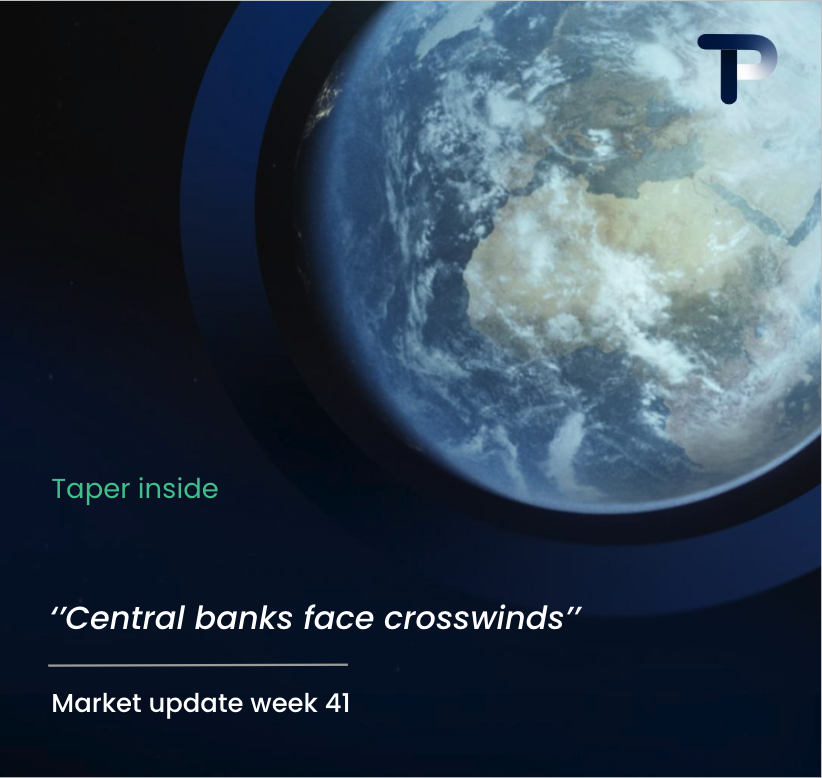Trade finance for e-commerce businesses provides financing solutions and payment mechanisms that help online retailers manage cash flow, fund inventory, and process international transactions. Through instruments like letters of credit, invoice financing, and multi-currency payment systems, e-commerce companies can secure working capital while reducing risks associated with cross-border trade.
Understanding trade finance in the digital commerce landscape
Trade finance has evolved significantly to meet the unique demands of digital commerce. Unlike traditional brick-and-mortar retailers, e-commerce businesses operate in a global marketplace where transactions occur across multiple currencies and jurisdictions simultaneously.
The digital commerce landscape requires flexible financing solutions that can adapt to rapid inventory turnover, seasonal fluctuations, and varying payment terms across different markets. Modern trade finance providers now offer integrated platforms that combine traditional financing instruments with digital payment processing capabilities.
This evolution addresses specific challenges that e-commerce businesses face, including managing cash flow gaps between purchasing inventory and receiving customer payments, handling currency exchange risks, and ensuring secure payment processing across international borders. The integration of technology has streamlined many processes that were previously paper-based and time-consuming.
What is trade finance and why do e-commerce businesses need it?
Trade finance encompasses financial instruments and products that facilitate international trade by providing working capital, reducing payment risks, and enabling smooth transaction flows between buyers and sellers across different countries.
E-commerce businesses require specialised financing solutions because they often face unique operational challenges. Online retailers typically need to purchase inventory well before receiving customer payments, creating cash flow gaps that can limit growth opportunities. Additionally, international e-commerce involves complex payment processing across multiple currencies and regulatory environments.
The core components of e-commerce trade finance include working capital loans for inventory purchases, payment processing solutions for international transactions, currency hedging products to manage exchange rate risks, and credit facilities that provide flexible access to funds based on sales volumes.
These solutions become particularly important when scaling operations internationally, as e-commerce businesses must navigate different payment preferences, regulatory requirements, and currency fluctuations while maintaining competitive pricing and reliable service delivery.
How does export financing work for online retailers?
Export financing for online retailers involves specialised financial instruments that facilitate international sales by providing payment guarantees, managing currency risks, and ensuring smooth transaction processing across borders.
Letters of credit remain relevant for larger e-commerce transactions, particularly in B2B online sales. These instruments provide payment guarantees to international customers while ensuring that online retailers receive payment upon meeting specified delivery conditions. However, the documentation process has been streamlined for digital commerce applications.
Documentary collections work well for established e-commerce relationships where trust has been built over time. This method involves banks handling the exchange of shipping documents and payments, providing a middle ground between open account trading and letters of credit.
Trade credit insurance has become increasingly important for e-commerce exports, protecting online retailers against non-payment risks from international customers. This insurance enables businesses to offer competitive payment terms while maintaining protection against customer defaults or political risks in destination countries.
What are the main types of trade finance solutions for cross-border e-commerce?
Cross-border e-commerce businesses can access various trade finance solutions designed to address specific operational needs, from inventory financing to international payment processing.
| Solution Type | Primary Use | Best For |
|---|---|---|
| Working Capital Loans | Inventory purchases and operational expenses | Seasonal businesses with predictable sales cycles |
| Invoice Financing | Converting outstanding invoices to immediate cash | B2B e-commerce with extended payment terms |
| Supply Chain Financing | Optimising supplier payment terms | Businesses with established supplier relationships |
| Multi-currency Payment Solutions | Processing international transactions | Global e-commerce operations |
Supply chain financing has gained particular relevance for e-commerce businesses, allowing them to optimise payment terms with suppliers while maintaining strong relationships. This approach can significantly improve cash flow management by extending payment periods without negatively impacting supplier relationships.
Multi-currency payment solutions form the backbone of international e-commerce operations, enabling businesses to accept payments in customers’ preferred currencies while managing foreign exchange risks effectively.
How do international payments and multi-currency transactions work in e-commerce trade finance?
International payments in e-commerce trade finance involve sophisticated processing systems that handle currency conversion, regulatory compliance, and risk management while ensuring fast, secure transaction completion across global markets.
Cross-border payment processing begins when customers initiate transactions in their local currencies. Modern payment processors convert these transactions through competitive foreign exchange rates, often providing better rates than traditional banks. The funds are then settled into the merchant’s preferred currency or held in multi-currency accounts.
Multi-currency IBAN accounts have revolutionised international e-commerce by allowing businesses to receive payments directly in various currencies without maintaining separate banking relationships in each country. This approach reduces transaction costs and processing times while simplifying financial management.
Currency exchange mechanisms now incorporate hedging solutions that protect e-commerce businesses from adverse exchange rate movements. Forward contracts and flexible forward arrangements allow businesses to lock in favourable rates for future transactions, providing predictable costs for international operations.
Financial service providers facilitate these transactions through integrated platforms that combine payment processing, currency conversion, and risk management tools. These platforms often include automated compliance checking to ensure transactions meet regulatory requirements in both origin and destination countries.
Key takeaways for e-commerce businesses considering trade finance solutions
Selecting appropriate trade finance solutions requires careful consideration of your business model, international markets, and growth objectives. The right combination of financing instruments can significantly impact your ability to scale operations and compete effectively in global markets.
When choosing a trade finance partner, prioritise providers that offer integrated solutions combining payment processing, currency management, and financing facilities. This approach reduces complexity and provides better oversight of your international operations. Look for partners with experience in e-commerce-specific challenges and regulatory requirements.
Understanding costs and benefits involves evaluating not just direct fees, but also the impact on cash flow, operational efficiency, and growth potential. Transparent pricing structures help avoid unexpected costs that can erode profit margins, particularly important for price-sensitive e-commerce operations.
Compliance requirements vary significantly across jurisdictions, making it important to work with providers who understand international regulatory frameworks. Automated compliance tools can reduce administrative burden while ensuring adherence to anti-money laundering and other regulatory requirements.
Specialised financial services designed for international commerce can support sustainable growth by providing scalable solutions that adapt to changing business needs. Business IBAN solutions can streamline your global operations by offering multi-currency account management alongside comprehensive trade finance facilities. As your e-commerce operations expand, your trade finance arrangements should be able to accommodate increased transaction volumes and new market entries without requiring complete restructuring of your financial infrastructure.
Frequently Asked Questions
How much working capital should I secure before expanding my e-commerce business internationally?
The amount depends on your inventory turnover rate and payment terms, but generally aim for 3-6 months of operating expenses plus inventory costs for new markets. Consider seasonal fluctuations and longer payment cycles in international markets when calculating requirements. Start with conservative estimates and scale up as you establish reliable sales patterns in each new market.
What are the typical costs associated with multi-currency payment processing for e-commerce?
Multi-currency processing typically costs 1-3% per transaction, including foreign exchange margins of 0.5-2% above interbank rates. Additional fees may include monthly account maintenance (£10-50), settlement fees (£5-15 per transaction), and compliance charges. Compare total cost of ownership rather than just headline rates, as some providers offer better exchange rates but higher fixed fees.
How quickly can I access funds through invoice financing for my e-commerce business?
Most invoice financing providers can advance 70-90% of invoice value within 24-48 hours of approval. The remaining balance (minus fees) is released when your customer pays. Digital platforms often provide faster processing than traditional banks, with some offering same-day funding for established clients with good payment histories.
What happens if my international customer doesn't pay when using trade credit insurance?
Trade credit insurance typically covers 80-95% of the invoice value after a waiting period (usually 90-180 days from due date). You'll need to demonstrate collection efforts and provide documentation of the default. The insurer handles recovery efforts and pays the claim, though you remain responsible for the uninsured portion and any deductibles.
Can I use letters of credit for small-value e-commerce transactions, or are they only for large orders?
While letters of credit are traditionally used for larger transactions (typically £10,000+), some digital platforms now offer simplified versions for smaller e-commerce orders. However, the documentation requirements and costs often make them uneconomical for transactions under £5,000. Consider documentary collections or trade credit insurance for smaller international sales instead.
How do I protect my e-commerce business from currency fluctuations when selling internationally?
Use forward contracts to lock in exchange rates for future transactions, typically 3-12 months ahead. Many payment processors offer built-in hedging tools or flexible forward arrangements. Alternatively, price products in your home currency and let customers bear the exchange risk, or use dynamic pricing that adjusts automatically based on current exchange rates.
What compliance requirements should I be aware of when using trade finance for international e-commerce?
Key requirements include anti-money laundering (AML) checks, know-your-customer (KYC) verification, and sanctions screening for all international transactions. You'll need proper documentation for cross-border payments, including commercial invoices and proof of goods delivery. Some countries require specific export/import documentation, and certain high-value transactions may need regulatory reporting.
Hi there! 👋 I see you're reading about multi-currency IBAN accounts for supply chain payments. Smart choice - these accounts can save businesses 2-4% on every international transaction!
What best describes your current situation with international supplier payments?
Which of these challenges are you currently facing with international payments? (Select all that apply)
What's driving your interest in multi-currency payment solutions? Tell us about your business goals or challenges.
Great! To help us understand your specific needs better, could you share more details about your international payment volume or any particular requirements?
Perfect! Let's connect you with one of our international payments specialists who can show you exactly how Taper's multi-currency IBAN accounts can save you money and streamline your supply chain payments.



